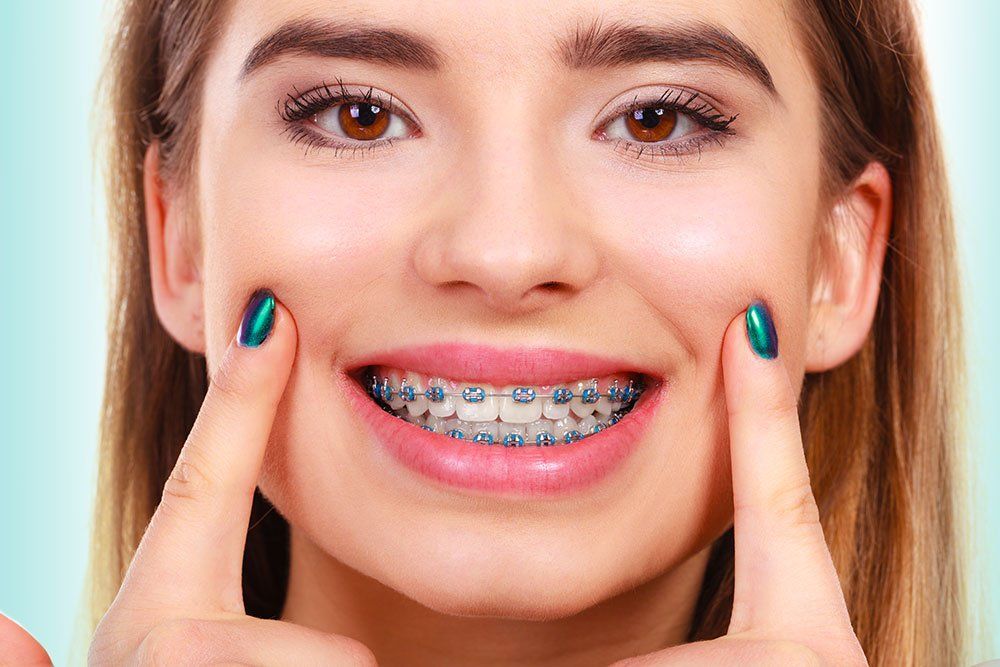OV Ortho Blog

For those of you who are looking to straighten your teeth and perfect that happy and healthy smile, conventional braces and clear aligners are the two main options. What are the advantages and disadvantages of the two? It really comes down to on what kind of dental problems you are trying to fix and what level of comfort you want. In this blog post, we’ll give you a little more information about both conventional braces and clear aligners and explore the pros and cons of each. Conventional Braces Braces are not just for teenagers! They can be a great option for adults who want to straighten their teeth as well. For conventional braces, metal or porcelain brackets are bonded to the teeth and connected by a wire. Braces apply steady pressure to the teeth to gradually correct their position and appearance. Pros: Braces can correct more dental problems than clear aligners can and newer options for braces are more comfortable and more discreet than what you might expect. Cons: It’s still very obvious that you are wearing braces and you might have trouble with certain foods sticking to them, meaning you’ll need to take extra care when brushing your teeth to make sure to get all food residue out from your teeth and braces every day. They can also be less comfortable than clear aligners. Clear Aligners For people who want a less visible and more comfortable way to straighten their teeth, clear aligners are a great option. Clear aligners are transparent, and you can remove them yourself. Each set is placed over the teeth for a few weeks and then switched out. Your dentist will have a plan to determine how many sets you need. Pros: Clear aligners are nearly invisible, and they correct the position of your teeth faster than braces. They are also more comfortable and much easier to clean. Cons: You’ll likely need to commit to having clear aligners on almost 24/7 and they can’t correct as many dental problems as braces so not everyone will be able to take advantage of them. Are you thinking of getting braces or clear aligners soon? Get in touch with Oxmoor Valley Orthodontics here for a free consultation.

We all know that healthy, beautiful smiles don’t necessarily come without proper dental care. If you’re trying to ensure those pearly white teeth for your child—you know, that amazing smile that looks like it came straight out of the pages of a magazine—you may be surprised to learn that orthodontic care well before their teen years can be a huge help. Your child may benefit from having braces as early as the first or second grade! The American Association of Orthodontists recommends that your child’s very first orthodontist appointment be no later than at age 7. Orthodontists can evaluate a child at around age 7 to identify orthodontic issues. At this age, your son or daughter will likely still have baby teeth, but he or she will also enough permanent teeth for the orthodontist to examine for any developing problems that can be addressed early. Crossbites, overbites, underbites, crowding, excessively spaced teeth, and other conditions start to appear around this time. With early intervention, you’ll be able to catch developing conditions well before they become more serious, and you’ll be glad you caught it early. It may also be easier to treat certain conditions as your child’s jaw is still developing and not every permanent tooth has come in. You may also be able to prevent having more involved and more expensive treatments for your child later on. Let’s talk about some of the conditions that benefit most from early intervention: Crossbites – Upper teeth typically fit outside the lower teeth. With crossbites, some or all of the upper teeth close inside the lower teeth. Underbites – The bottom front teeth end up covering up the top front teeth because the lower jaw extends beyond the upper jaw. This can lead to excessive wear on the front teeth and create problems chewing. Crowding – Teeth becomes crooked because there isn’t enough room in the mouth for all the teeth to grow in normally. This condition makes teeth harder to clean and vulnerable to uneven wear. Protruding teeth – Teeth protrude out at an angle rather than straight downwards. Not only is this unsightly, it makes the teeth more vulnerable to being fractured or chipped. Excessively spaced teeth – There are gaps in teeth because there is an abundance of room in the mouth. Missing teeth – Missing teeth can cause shifts and misalignments in the surrounding teeth. Thumbsucking – Children can actually shift the bones in their palate by putting pressure on the roof of their mouth when they are sucking their thumb, finger, or pacifier. There are several treatment options available when it comes to early orthodontic intervention. Some conditions may call for the removal of baby teeth, moving teeth, or changing the position of the jaw. Your child may have to get braces at an earlier age—which may not be a bad thing since younger kids actually might be more open to wearing braces than teenagers. Your child may even get excited about the colorful choices they’ll have for braces. No matter the course of action required for your child, seeking an evaluation for early orthodontic intervention is a great idea to ensure healthy and beautiful teeth for the future! Oxmoor Valley Orthodontics is ready to see you soon! Click here to contact us for a free consultation today!

